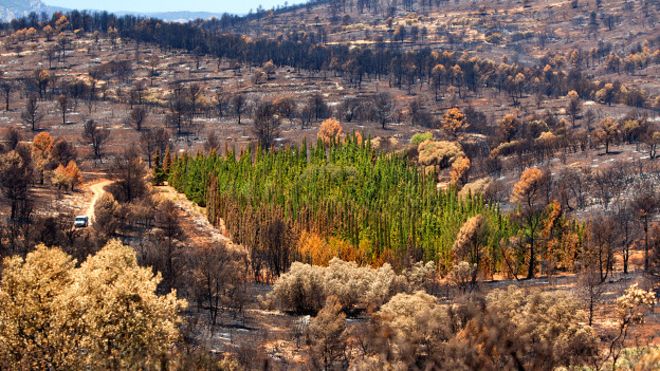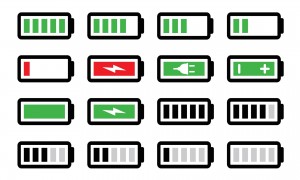…to overtake a bicyclist if there is no danger for anyone and no cars from the opposite direction:
Earth’s temperature changes in the last century-and-a-half, analyzed within 30 seconds in a video
Earth continues to increase its temperature. According to NASA scientists, the 10 warmest years in the 134-year record have all occurred since 1998, with 2010 and 2005 ranking as the warmest years. The average global temperature in 2013 was 14.6 °C (58.3 °F), which is 0.6 °C (1.1 °F) warmer than the mid-20th century.
The following video shows a color-coded map which represents how Earth’s surface temperature has changed from 1880 to 2013: red colour denotes higher-than-normal temperatures and blue colour denotes lower-than-normal temperatures.
The temperature analysis done by GISS is compiled from weather data from more than 1 000 meteorological stations around the world, satellite observations of sea-surface temperature and Antarctic research station measurements, taking into account station history and urban heat-island effects. Software is used to calculate the difference between surface temperature in a given month and the average temperature for the same place from 1951 to 1980.
Source: NASA Goddard Space Flight Center Scientific Visualization Studio
Ununtrium, the 113th (synthetic) element on the periodic table
Ununtrium is a man-made element so unstable and radioactive that only tiny amounts of it could be observed and created. Like Plutonium, Ununtrium emits deadly alpha rays as it decays, a radiation much more harmful than gamma and beta rays. Little is yet known about its properties and applications, but it is likely that Ununtrium could only be used in the nuclear power or weapons industries. In both cases, it is inevitable to remember the Fukushima Plutonium nuclear power plant that failed after a 9-scale earthquake in 2011 (even today a 12-mile containment zone exists) and the Nagasaki implosion-type fission Plutonium bomb that exploded at the WWII in 1945 (200,000 deaths).
Even though Japan has these experiences, Ununtrium is officially recognized by Japanese researchers in the Riken Nishina Centre for Accelerator-Based Science. This begs the question why these elements are being made, especially when Ununtrium is more destructive than Plutonium. One explanation could be the thirst for search and desire to find the “Islands of Stability”, i.e.; the elements that belonging to this kind of heavy elements are extraordinarily and unexpectedly stable, unlike the rest which are very unstable. What is your opinion about this kind of research?
From waste to precious metals
Just as a modern version of the fairy tale The Ugly Duckling, a group of FEFU (Far Eastern Federal University) scientists have developed a method to take care of combustible stone’s waste and turn it into precious metals. As explain in rbth science and technology, ash waste is no longer considered a problem that occupies vast areas and pollute the environment, but a cost-effective mine for processing the platinum group metals and other valuable components.
This work falls within the scope of EURELCO (European Enhance Landfill Mining), which promotes research on conditioning and integrated valorisation of a landfilled waste stream, using innovative transformation technologies.
Peer-Reviewed Scientific Video Journals
In a world that the rate of technological and social change accelerates frighteningly, change itself often seems to be the only constant. The time has come and gone where the papers acquisitions can be based solely on printed copies, due to the online-publication. First the pdf-files appear, followed by the posterior audioslides. Now a new approach has arrived based on videos: you submit the manuscript, and the journal produce the video.

This is the case of JoVE. JoVe publishes scientific methods video articles that are peer-reviewed, PubMed-indexed, and being cited in many top journals including Nature, Science and Cell. This new video-journal has received its first Impact Factor–1.325–indexed in the 2015 Journal Citation Reports. JoVE includes:
- 80 new video articles published every month
- 4,000+ video articles with 16,000+ authors published since 2006
- 900+ subscribing institutions
- 6,000,000+ users per year
- Video production conducted by JoVE filming crews in 20 countries around the world
Examples of JoVE video articles from labs at MIT, Harvard , Yale, Stanford, Princeton and Caltech can show leading scientists communicate their research in the most innovative format.
As a result, universities are acquiring usage rights to JoVE (video)articles, e.g. the Univiersity of Arkansas Libraries. Technology has been a force in the development of civilization, all the more so as its link with science has been forged. In the broadest sense, video-papers could extend our abilities to change the world: to cut, shape, or put together ideas; to move things from one place to another; to reach farther with our hands, voices, and senses. Are you ready to be the actor/actress of your dreams?
Smartphone bateries: an invasion of your privacy
A group of four French and Belgian security researchers have demonstrated how to track users with nothing more than their remaining battery power, which could compromise privacy. They question the assertation that HTML5 specifications “has minimal impact on privacy or fingerprinting, and therefore is exposed without permission grants”
More info in The Guardian
“Fireproof” trees to prevent the spread of wildfires

The cypress trees shown in image resisted a fire that had devastated 20,000 hectares around Andilla (Spain) in July 2012. All around the 9,000-m2 area of cypresses, including pine, oak, holm oak, juniper and gorse trees; had been consumed by the flames, whereas, only 12 cyppresses burnt (1.26% out of more than 940 of mediterranean cyppresses in total).
After three years of research, a study about the use of cypresses as a screen against fire was published in the Journal of Environmental Management.*
The high resistance of the cypresses to ignition has raised the possibility of using this species in fighting forest fires. Especially noteworthy is the behaviour of the tops of the trees which, despite the fact that the trees are packed close together, the fire did not advance through the higher branches and on the top of that, the flames barely caused the drying out.
“La naturaleza tiene la respuesta a muchos de los problemas que enfrentamos” B. Moya.
* Della Rocca, G; Hernando, C; Madrigal, J; Danti, R; Moya, J; Guijarro, M; Pecchioli, A; Moya, B. 2015. Possible land management uses of common cypress to reduce wildfire initiation risk: a laboratory study.
JOURNAL OF ENVIRONMENTAL MANAGEMENT, Vol: 159, 68-77 pp, DOI: 10.1016/j.jenvman.2015.05.020
Published: AUG 15 2015
The Phone Book Myth
The TV show Mythbusters interleaved two phone books and dramatized how hard it was to pull them apart. They ended up needing two tanks to pull the phone books apart against the resistance of friction.
15 PhD positions in an ETN-MSCA project – Deadline 30 July

UNEP internships
- The applicant MUST be in his/her third or fourth year of under-graduate (BA/BSc.) or in a graduate (Masters) or post-graduate (PhD) programme, and must continue to be enrolled during the period of the internship and after.
- Willingness to intern on a full-time basis spending five days a week for a period of not less than THREE MONTHS and not exceeding SIX MONTHS.
- Send a letter of endorsement from his/her educational institution, attesting to the fact that he/she is currently a registered student and will continue to be enrolled for the envisaged period of the internship. A letter from any one of the following personnel is suggested:
- Dean of Students or Dean of Faculty
- Registrar
- Placement Office
- Fluency in English is mandatory; knowledge of any other UN language (French or Spanish) is an advantage
